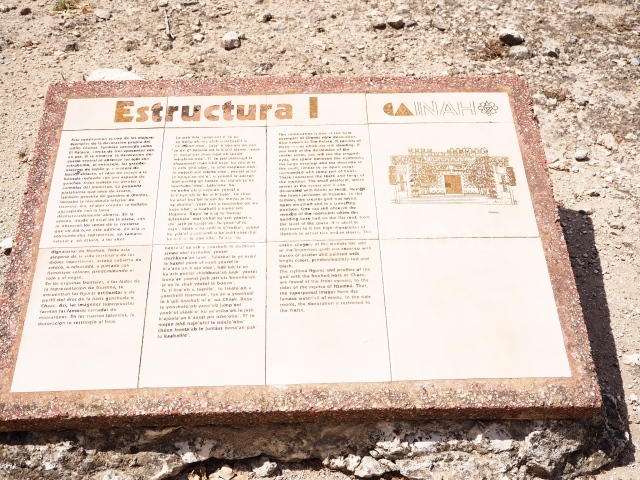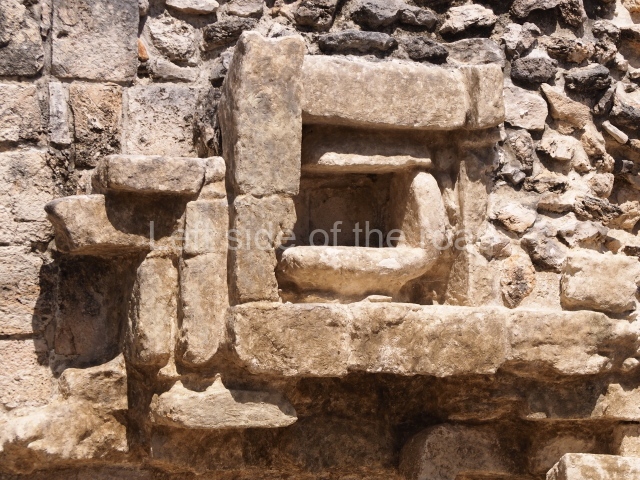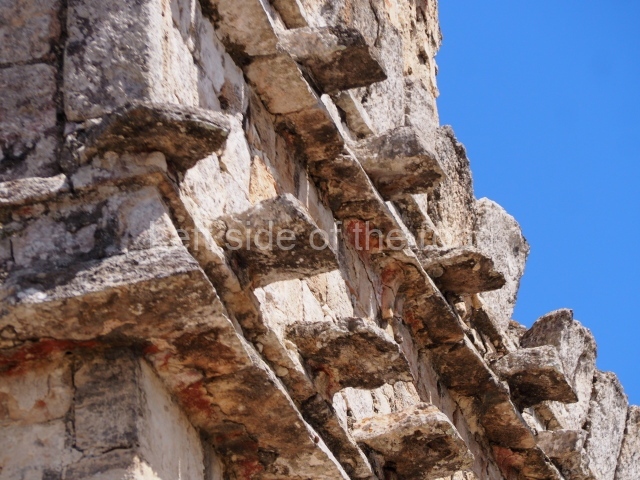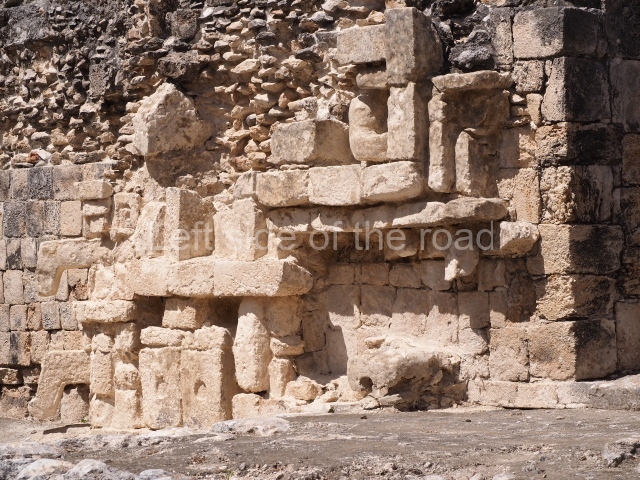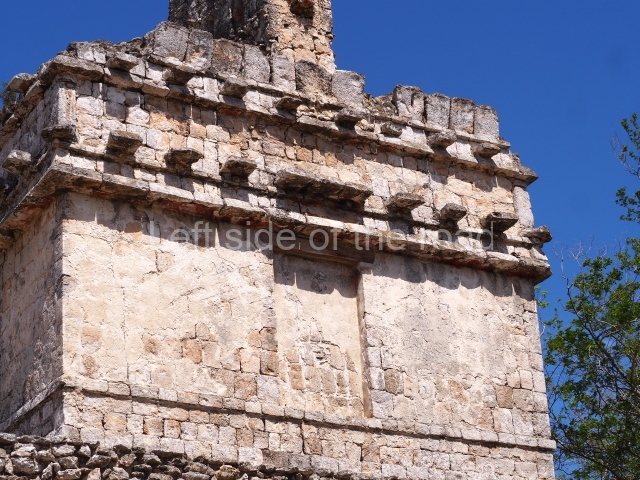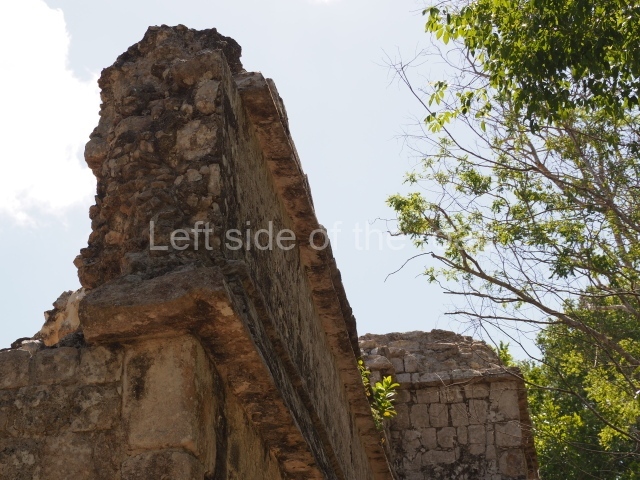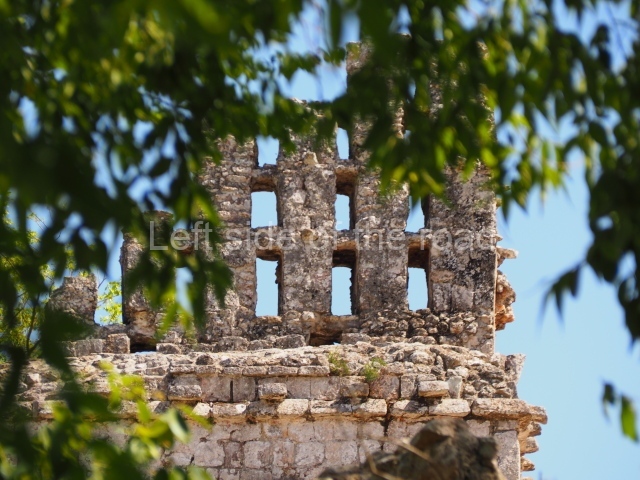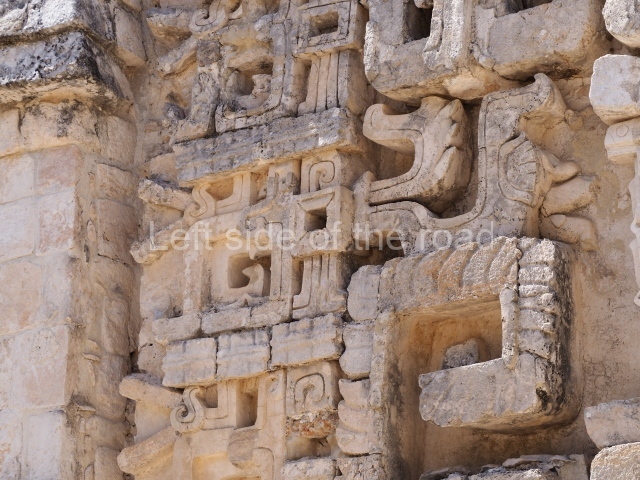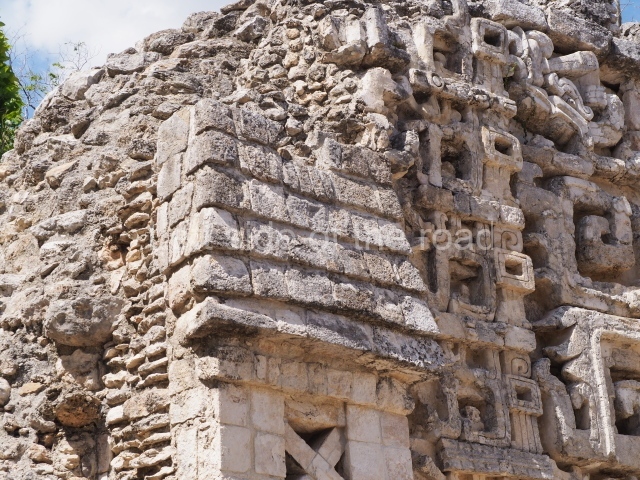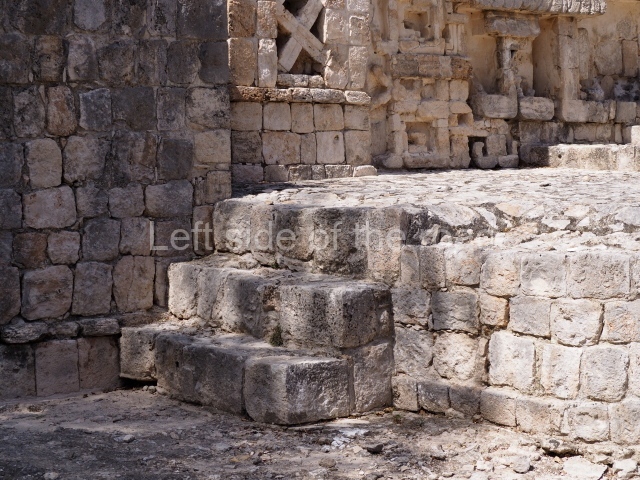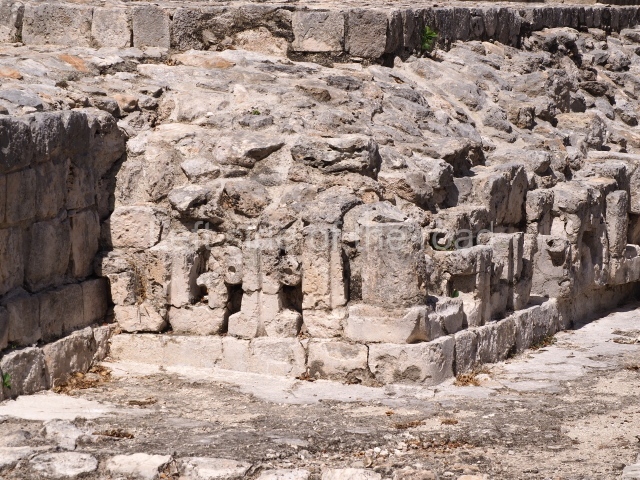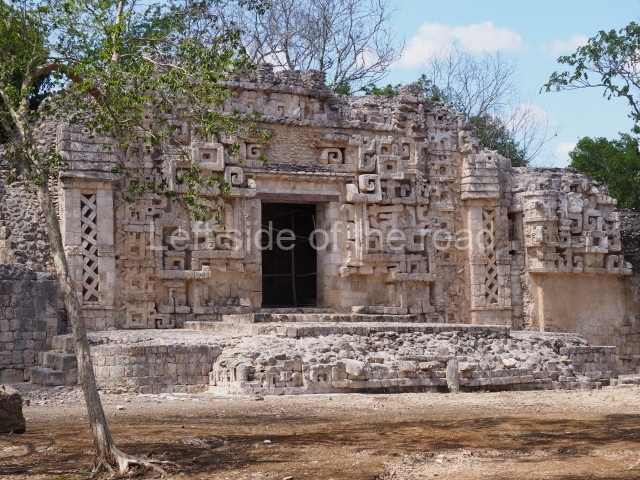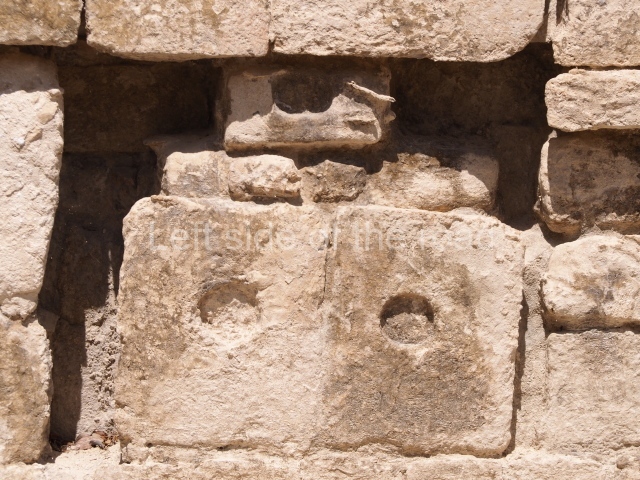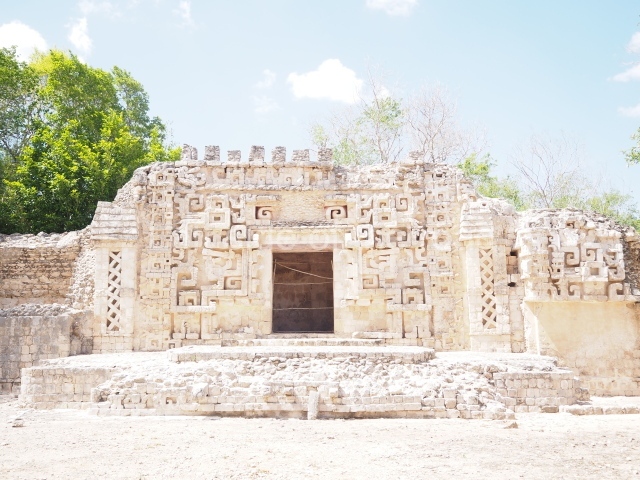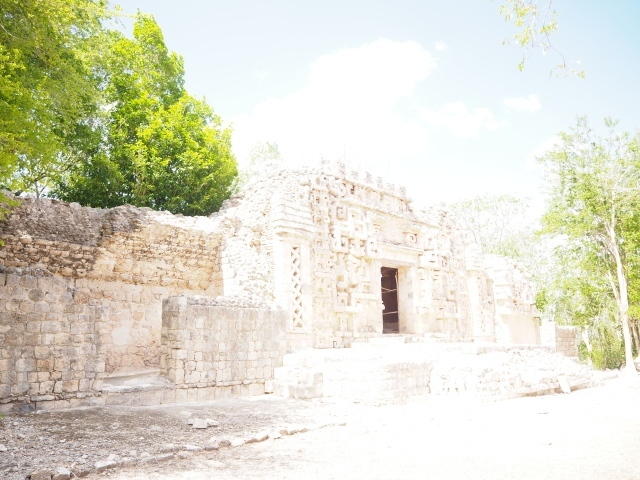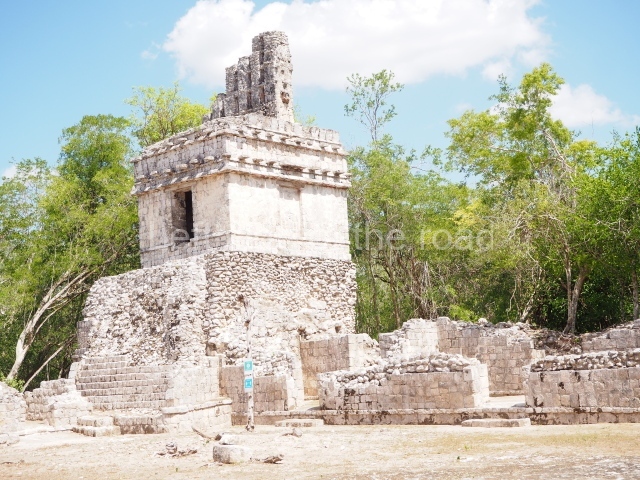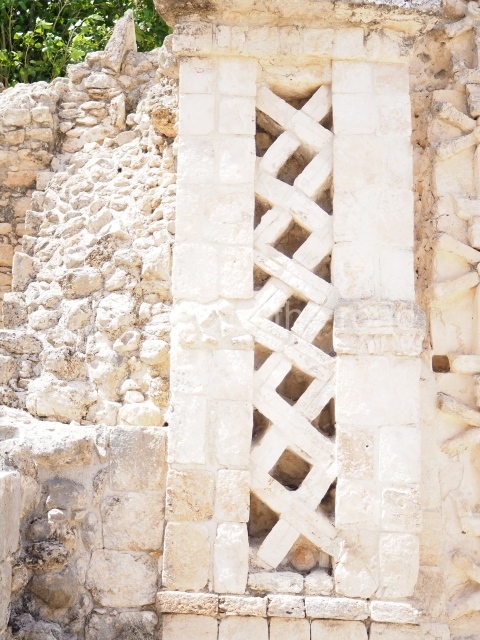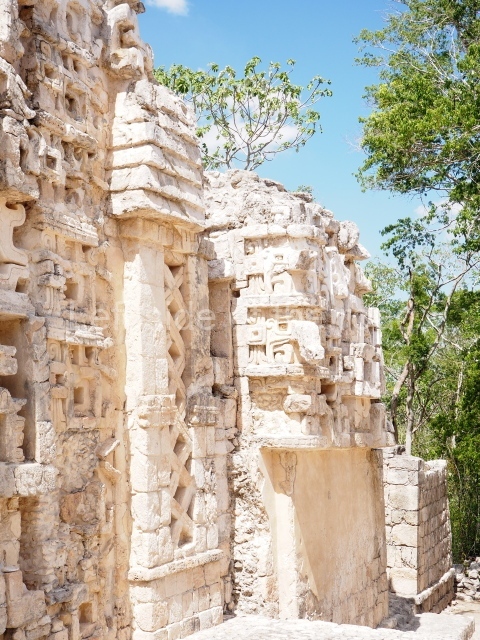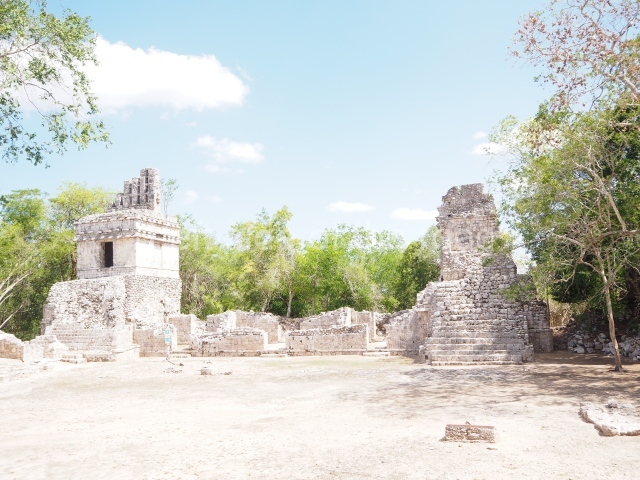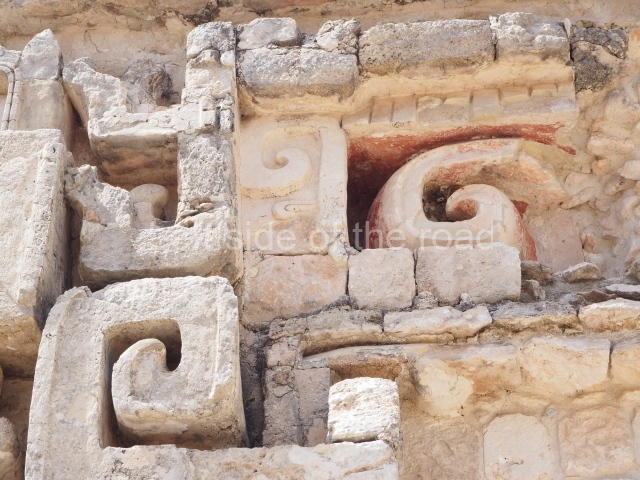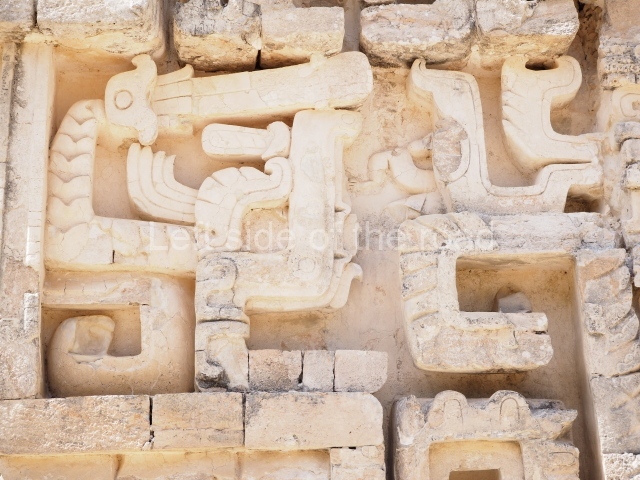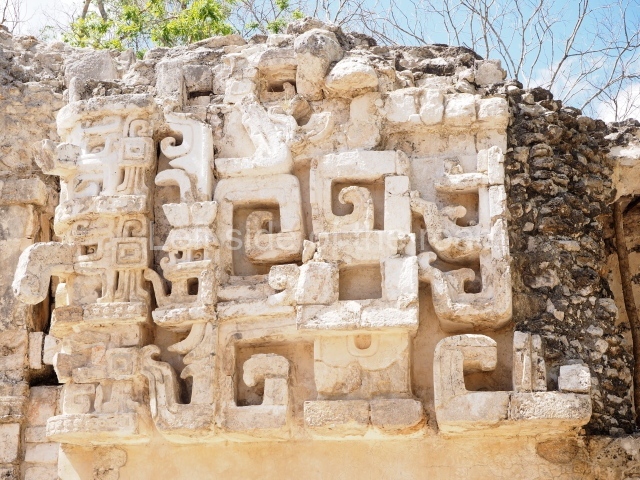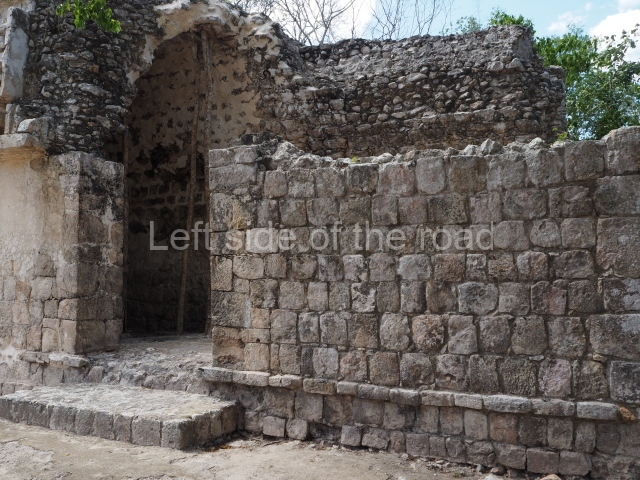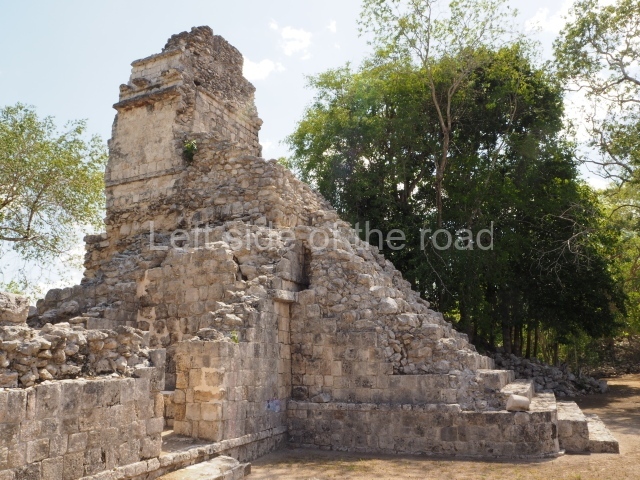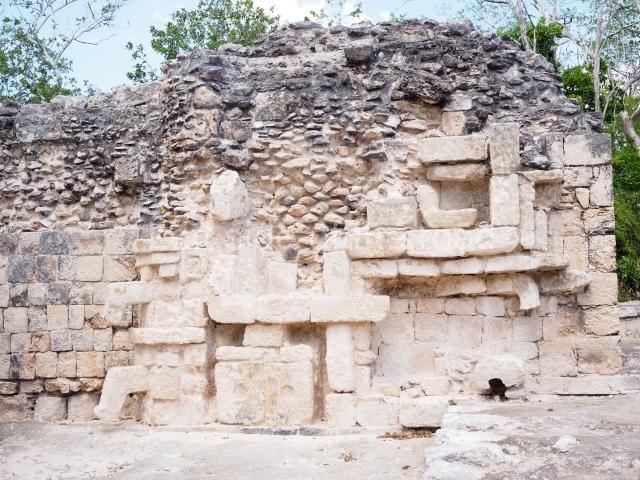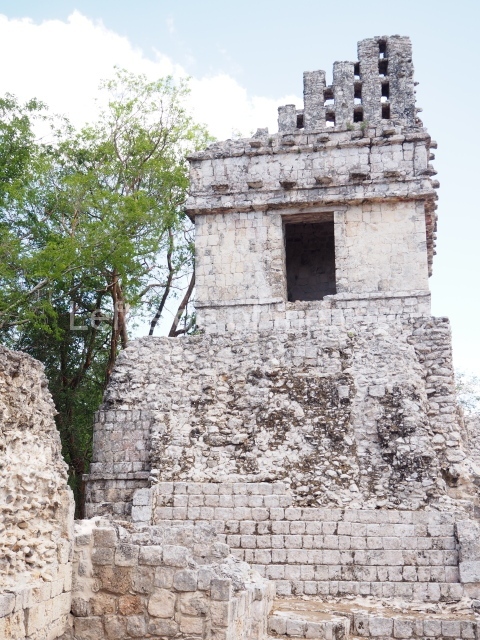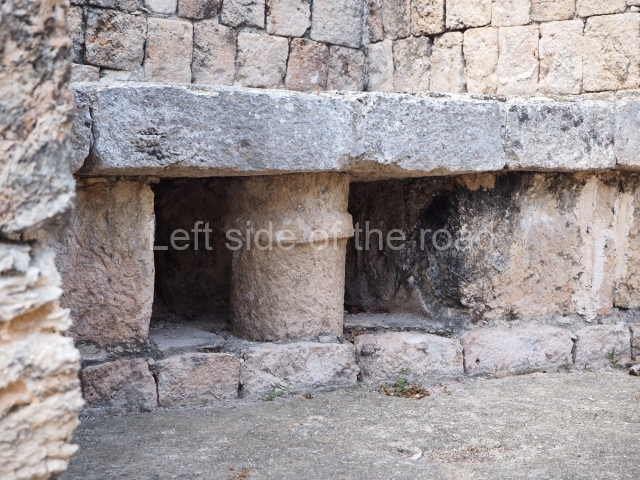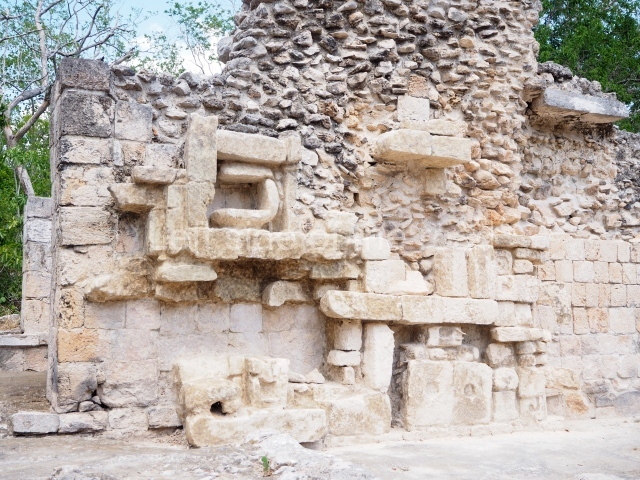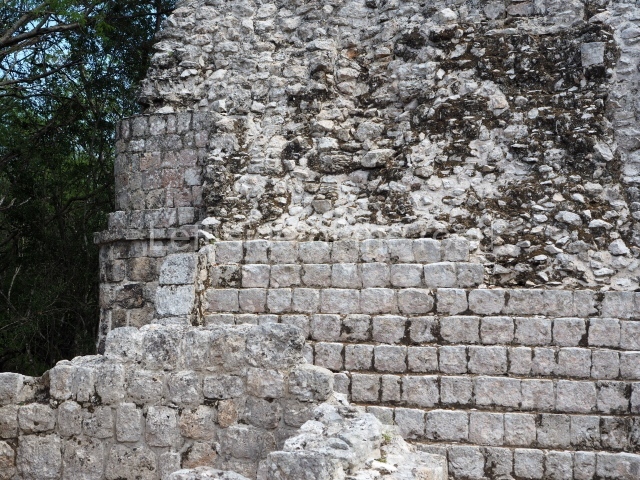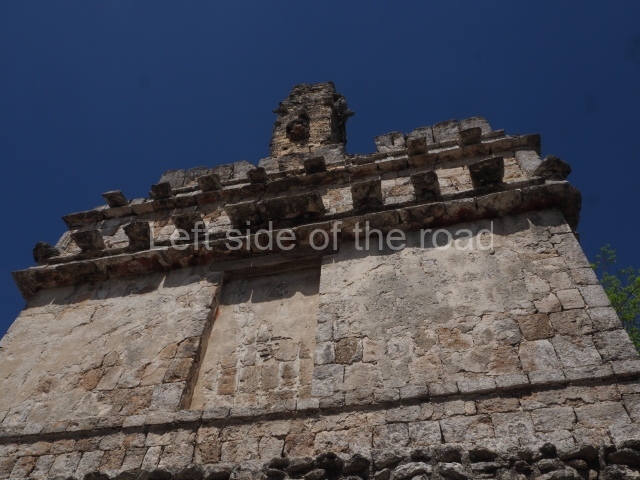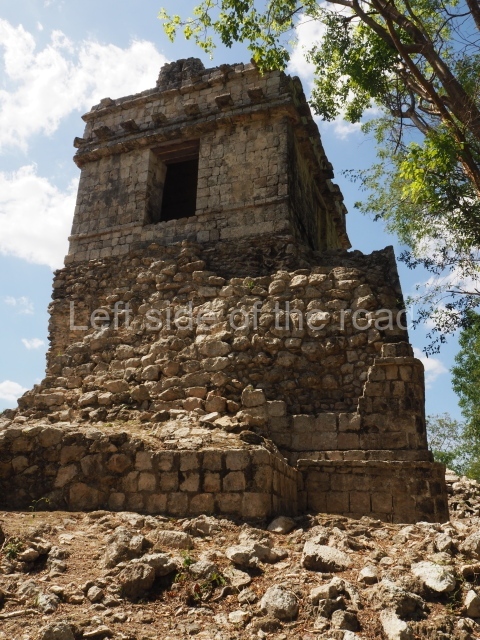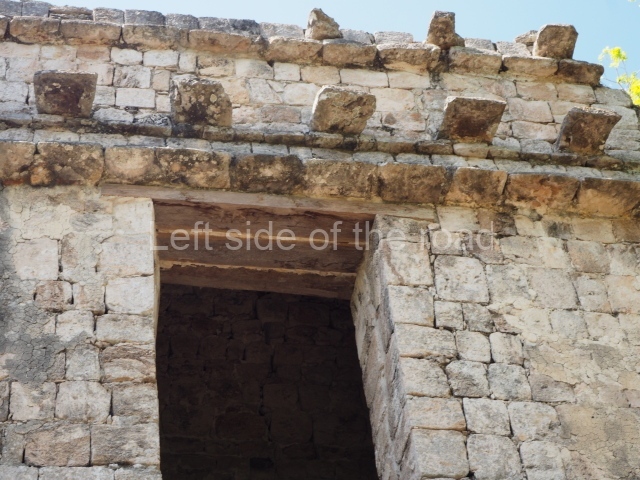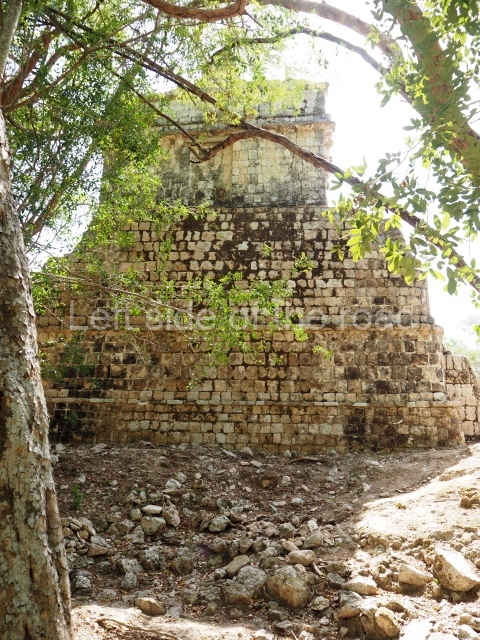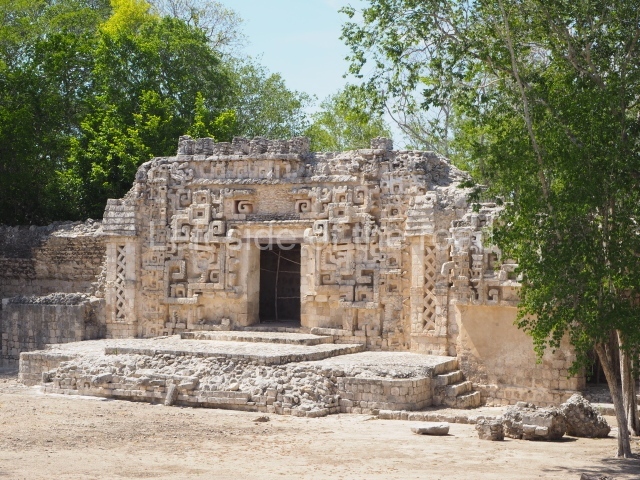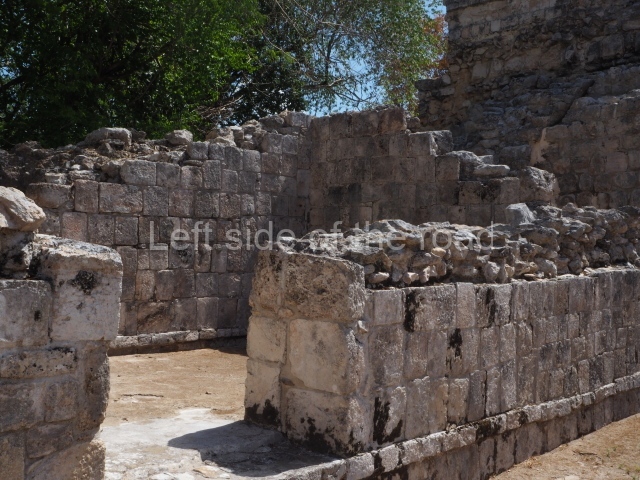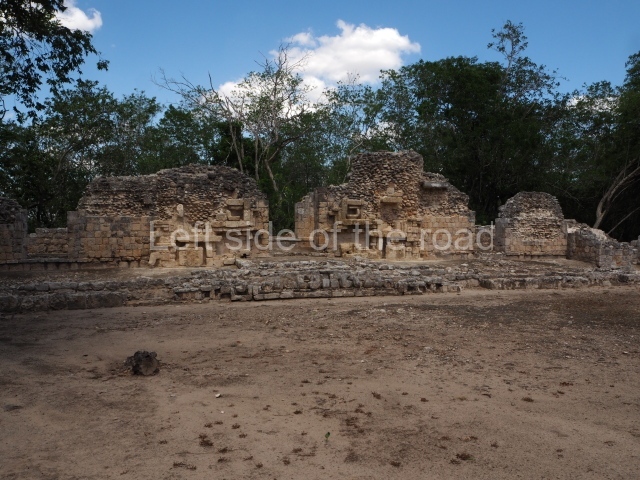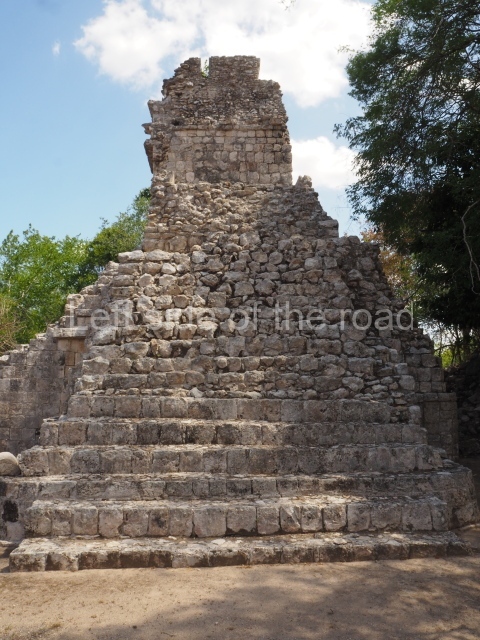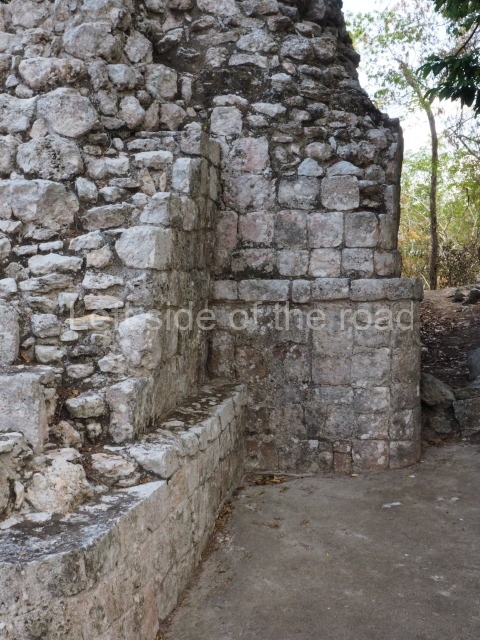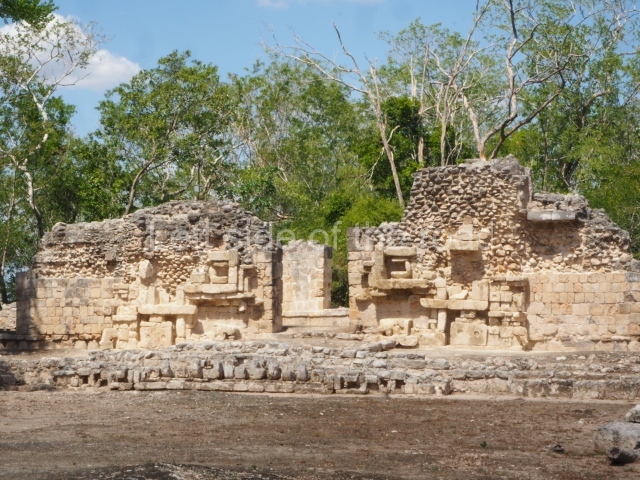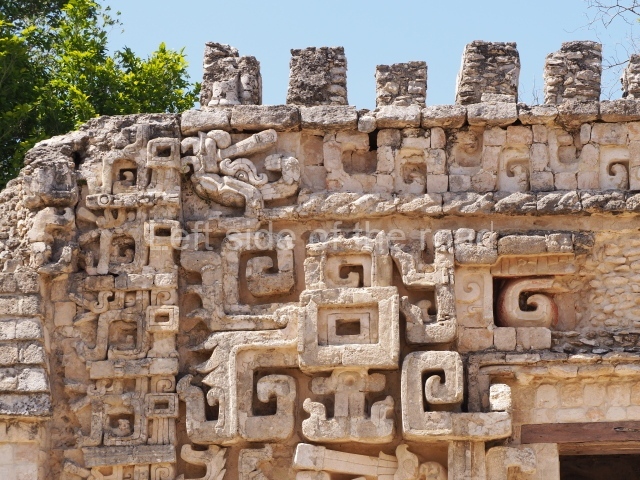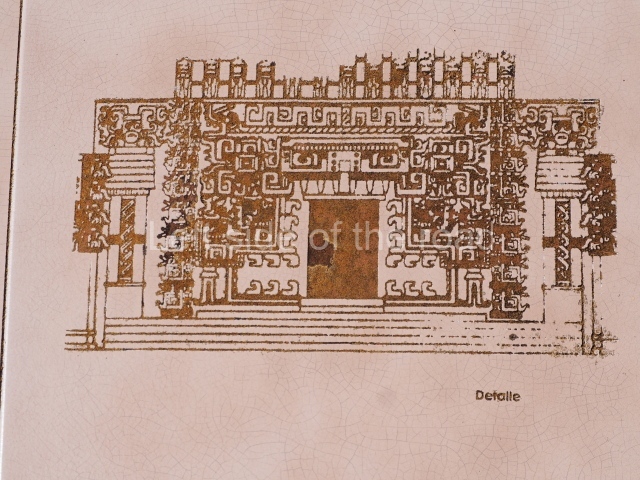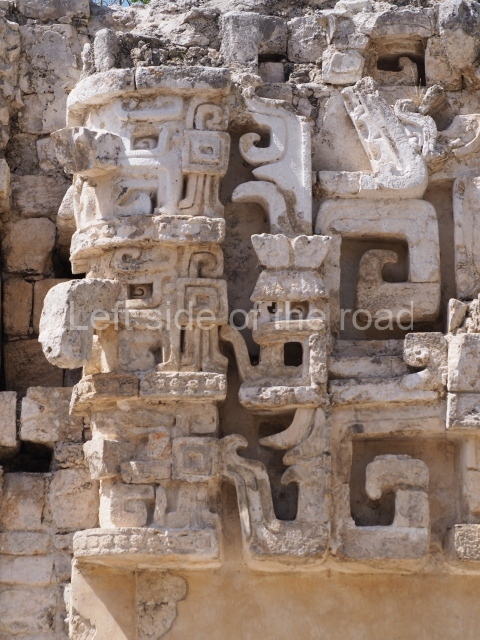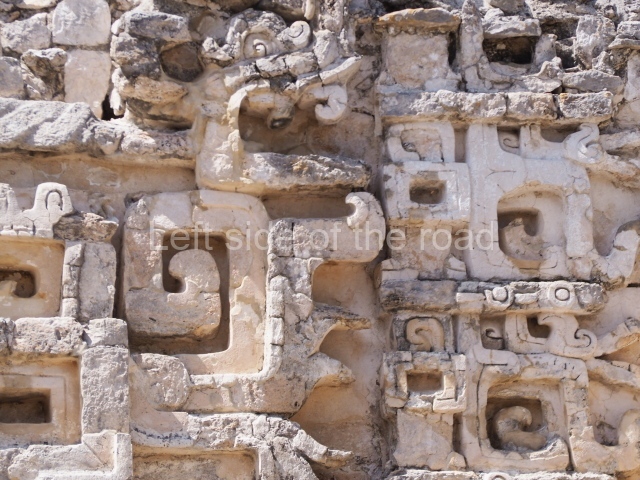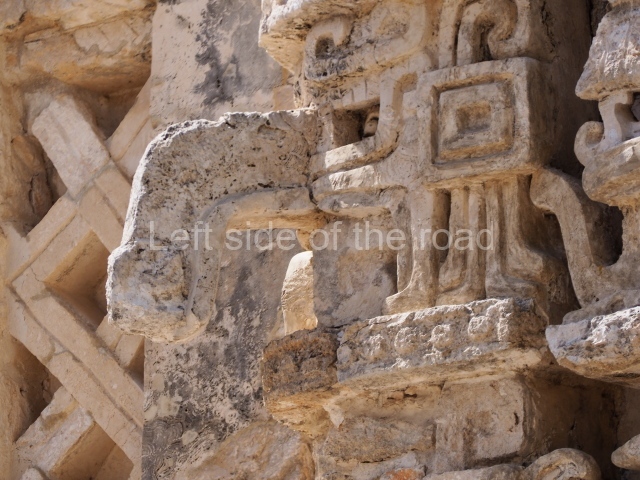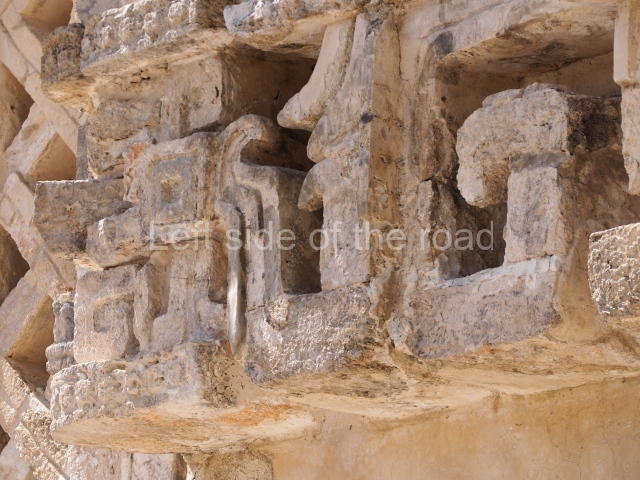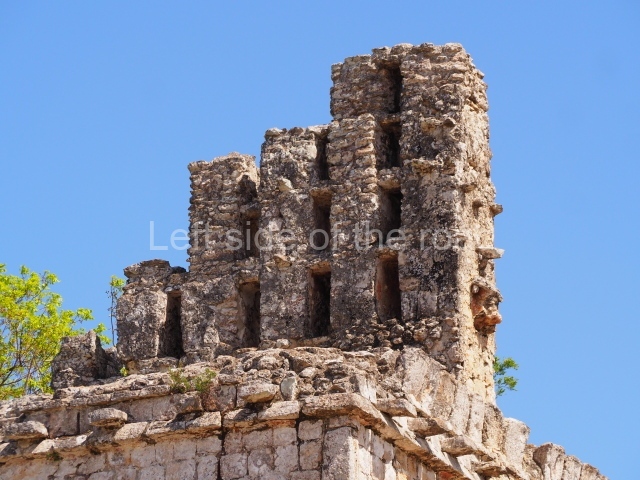Hochob – Campeche
Location
The pre-Hispanic settlement is situated at the top of a 30-m hill overlooking a large, fertile expanse of kankab (red earth). The top and slopes of this natural elevation were levelled. The largest buildings were built at the top, while the slopes were turned into terraces and platforms for dwellings with perishable walls and roofs, all now lost. Several strategically distributed chultunes or underground cisterns facilitated the collection of rain water. The archaeological site has been known by the name of Hochob since the late 19th century, when the local peasants used the pre-Hispanic rooms as granaries. In Yucatec Maya, hochob means ‘place where ears of maize are stored’. The site is 120 km from Campeche, passing through Edzna, Pich, Carlos Cano Cruz and Chenco. After Hopelchén, follow the road south to Dzibalchén and then Chencoh, approximately 55 km away.
Timeline and site description
The ceramics indicate an initial occupation in the Early Classic (around AD 300), although the constructions we can see today correspond to the Late Classic (AD 600- 900). The site was abandoned around AD 1100. The monumental buildings at Hochob form a rectangular plaza measuring 50 m along the east-west axis and 30 m along the north-south axis. This space is open at the west end and the largest constructions occupy the north side of the plaza. To the north-west stands a large mound of rubble which has not been excavated and, next to it, Structure 2, composed of three rooms. There are other unexplored mounds in the south-west section of the plaza.
Structure 2.
The central room reproduces the enormous jaws of the Earth Monster or Itzamna, which is flanked by stacks of masks viewed in profile. These are in turn framed by stylised images of houses with the woven mat motif at the entrances, the symbol of political authority. On the flat roof it is still possible to see the remains of a perforated roof comb which appears to have had 13 stucco sculptures of humans. The other two rooms had smooth lower walls and a frieze decorated with eyes and teeth above the entrance, ear ornaments on both sides and four stacked masks at each corner. All three rooms had a bench along the interior east wall.
Structure I.
This occupies the west side of the plaza and its central section was similar to that of Structure 2. Unfortunately, due to collapses and the inclemency of the weather, only the interior sections of the building have survived, again composed of three rooms but smaller than the ones in Structure 2.
Structure 5.
Situated in the south-east section of the plaza, this comprises a small pyramid platform, some 5 m in height, with two rooms at the top; each has its own stairway and separate entrance, to the north and south. The stairways once had balustrades or veneer stones along the sides. The exterior east and west walls display ‘false’ or simulated entrances. At the top of the structure are the remains of a roof comb with ‘souls’ or projecting stone tenons that provided a base for stucco motifs.
Sub-structure 5.
This name refers to the walls of a construction with six rooms, situated just west of Structure 5. The rooms at the centre are the largest. The excavation of this structure has revealed that it was built before Structures 5 and 6.
Structure 6.
This is another pyramid platform with two rooms at the top. The difference in relation to Structure 5 is that it is lower in height, the stairways do not have balustrades and neither are there any simulated entrances on the lateral walls.
Importance and relations
The size of the Hochob settlement, its archaeological remains and its location all indicate that it gravitated around larger polities such as Tabasqueno and Pakchen, 8 and 12 km to the north, respectively, Cacamax 10 km to the south-west and Dzibilnocac some 30 km to the north-east.
From: ‘The Maya: an architectural and landscape guide’, produced jointly by the Junta de Andulacia and the Universidad Autonoma de Mexico, 2010, pp304-306.
1. Structure 2; 2. Structure1; 3. Structure 5; 4. Structure 5; 6. Structure 6.
Getting there:
From Hopelchén. There are reasonably regular buses from the Sur ‘bus station’ in Hopelchén, where you’ll also find a written timetable of departures from the town. The nearest town/village to Hochob is Dzibalchén but the site is 13 kilometres away. You will need to negotiate a transport and waiting deal with a local mototaxi driver.
GPS:
19d 24’ 30” N
89d 46’ 15” W
Entrance:
M$70




